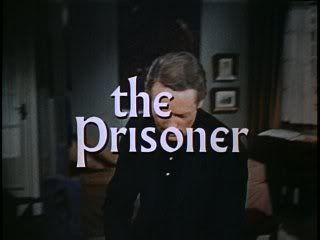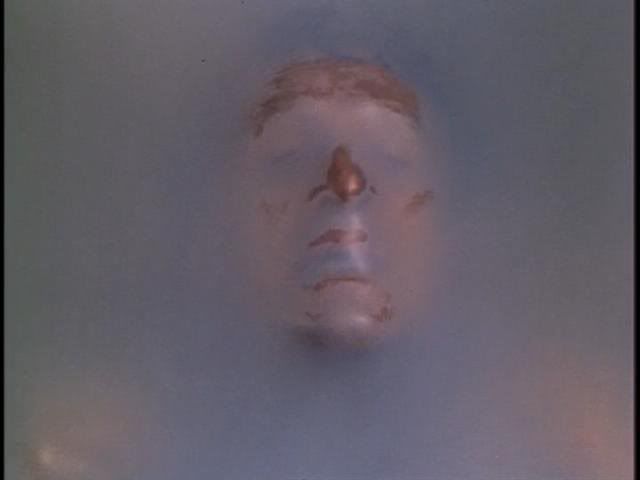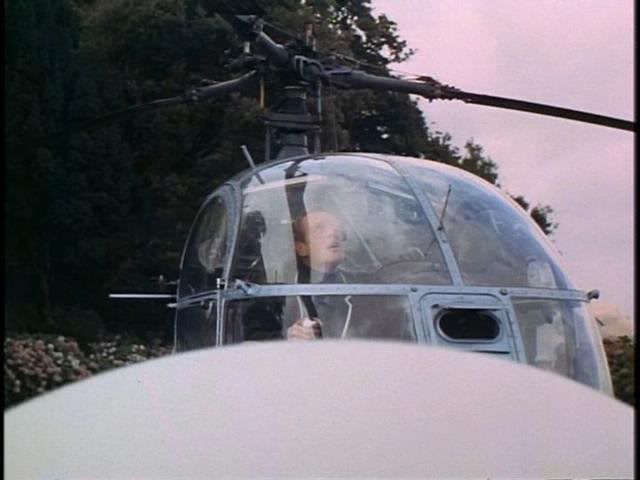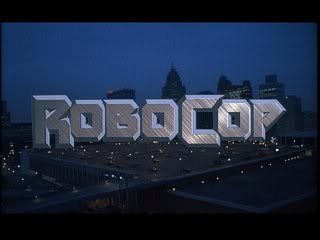
Paul Verhoeven is an enigma to me. His Hollywood films seem to vary between Sci-Fi satire (Starship Troopers, Total Recall) and baffling smut (Basic Instinct, Showgirls) with his early artistic Dutch films (Spetters, Soldier Of Orange) remaining some of his best. He's obviously a very smart director, and even his worst films have interesting ideas within them, but you really never know what you're going to get. Verhoeven's arrival to mainstream films came in 1987 with the blockbuster Sci-Fi action film Robocop, and the filmmakers satiric interests (and love of extreme violence) were already well defined.
Robocop is that most rare category of action film: one that works on multiple levels. On one hand audiences ate up the tale of Alex Murphy (Peter Weller), a clean cut cop in near-future Detroit, who is brutally murdered by criminals before having his corpse turned into a cyborg devoted to stopping crime. There's enough explosions and fantastical elements to catch the imagination of the most braindead movie-goer. On the other hand with its ridiculous commercials, relentlessly cheery newscasters, and comically ruthless businessmen right out of Wall Street Verhoeven has also created a satire of living in the 80s, as well as a scary prognostication of where the world has found itself in 2008. Even the design of ED-209 (the constantly misfiring prototype security robot) is based on a style over substance ethos.

While I think uneven acting sinks some of Starship Troopers, the ensemble cast in Robocop aquit themselves admirably. Peter Weller is bland as Alex Murphy, but spends most of the film in the extensive make-up and suit that make up Robocop and provides a necessarily sympathetic action hero. Nancy Allen is fine as his partner, but it's the baddies which really make the film memorable. While i'm always a bit put off by Ronny Cox's dialogue reading, it's Kurtwood Smith (well known as Red from That 70's Show) who demolishes the competition as the brutal Clarence Boddicker. His psychotic, gleeful demeanour ("Can you fly, Bobby?") is a stand-out in 80s action films. Boddicker's gang manage to indivudalize themselves as well with cheerfully twisted portrayals.
Being a Verhoeven film, violence is a given and Robocop certainly has its share. Originally given an X-rating by the MPAA, here Criterion presents the original uncut version of the film, including about two minutes of extra (almost exclusively violent) footage. The first dramatic difference comes in the boardroom scene where ED-209 is introduced. Originally, the haywire ED-209 shoots an employee several times, but in the uncut version the bullets almost tear the poor guy apart, leaving him a riddled, bloody mess. The other scene is Muphy's death scene, where an already extreme scene is taken completely over the edge as Murphy's arm is blown off with a shotgun before Boddicker casually puts a bullet through his brain. Rob Bottin's amazing FX work are given their due in this added footage.
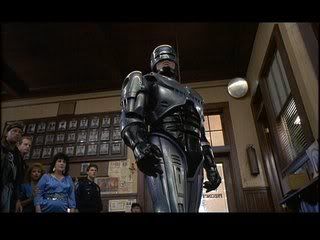
Speaking of FX, this film being before the common use of computer effects and compositing means that we get a rather mixed bag (though, one that was well ahead of its time in 1987). Bottin's physical FX work still looks amazing (particularly the memorable full body toxic waste melt during the film's climax), but Phil Tippett's (who brought the AT-ATs to life in Star Wars) stop-motion effects on ED-209 have unfortunately not aged as well. It's still amazing to watch, and the work to bring it to life deserves much credit, but it mostly provides a nostalgic thrill.
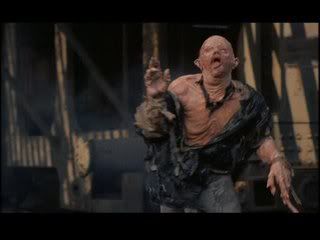
The film is presented in Verhoeven's preferred 1.66:1, though was originally filmed in a 1.85:1 ratio. The image quality is decent, but features considerable grain in some scenes. Criterion has come up with some wonderful worthy extras including a fascinating article about the films effects work that is augmented with clips, photos and production artwork. It's quite long but provides the viewer with some necessary insight into the awesome amount of work that went into making this film. There are also trailers (teaser and full length), storyboard comparisons, and an entertaining commentary featuring Verhoeven, co-writer Edward Neumeier, executive producer Jon Davison, and RoboCop expert Paul M. Sammon.
Visceral, violent entertainment which transcends what, in another director's hands, could have been a very limited concept. Robocop remains a triumphant, superior action film.
Robocop is that most rare category of action film: one that works on multiple levels. On one hand audiences ate up the tale of Alex Murphy (Peter Weller), a clean cut cop in near-future Detroit, who is brutally murdered by criminals before having his corpse turned into a cyborg devoted to stopping crime. There's enough explosions and fantastical elements to catch the imagination of the most braindead movie-goer. On the other hand with its ridiculous commercials, relentlessly cheery newscasters, and comically ruthless businessmen right out of Wall Street Verhoeven has also created a satire of living in the 80s, as well as a scary prognostication of where the world has found itself in 2008. Even the design of ED-209 (the constantly misfiring prototype security robot) is based on a style over substance ethos.

While I think uneven acting sinks some of Starship Troopers, the ensemble cast in Robocop aquit themselves admirably. Peter Weller is bland as Alex Murphy, but spends most of the film in the extensive make-up and suit that make up Robocop and provides a necessarily sympathetic action hero. Nancy Allen is fine as his partner, but it's the baddies which really make the film memorable. While i'm always a bit put off by Ronny Cox's dialogue reading, it's Kurtwood Smith (well known as Red from That 70's Show) who demolishes the competition as the brutal Clarence Boddicker. His psychotic, gleeful demeanour ("Can you fly, Bobby?") is a stand-out in 80s action films. Boddicker's gang manage to indivudalize themselves as well with cheerfully twisted portrayals.
Being a Verhoeven film, violence is a given and Robocop certainly has its share. Originally given an X-rating by the MPAA, here Criterion presents the original uncut version of the film, including about two minutes of extra (almost exclusively violent) footage. The first dramatic difference comes in the boardroom scene where ED-209 is introduced. Originally, the haywire ED-209 shoots an employee several times, but in the uncut version the bullets almost tear the poor guy apart, leaving him a riddled, bloody mess. The other scene is Muphy's death scene, where an already extreme scene is taken completely over the edge as Murphy's arm is blown off with a shotgun before Boddicker casually puts a bullet through his brain. Rob Bottin's amazing FX work are given their due in this added footage.

Speaking of FX, this film being before the common use of computer effects and compositing means that we get a rather mixed bag (though, one that was well ahead of its time in 1987). Bottin's physical FX work still looks amazing (particularly the memorable full body toxic waste melt during the film's climax), but Phil Tippett's (who brought the AT-ATs to life in Star Wars) stop-motion effects on ED-209 have unfortunately not aged as well. It's still amazing to watch, and the work to bring it to life deserves much credit, but it mostly provides a nostalgic thrill.

The film is presented in Verhoeven's preferred 1.66:1, though was originally filmed in a 1.85:1 ratio. The image quality is decent, but features considerable grain in some scenes. Criterion has come up with some wonderful worthy extras including a fascinating article about the films effects work that is augmented with clips, photos and production artwork. It's quite long but provides the viewer with some necessary insight into the awesome amount of work that went into making this film. There are also trailers (teaser and full length), storyboard comparisons, and an entertaining commentary featuring Verhoeven, co-writer Edward Neumeier, executive producer Jon Davison, and RoboCop expert Paul M. Sammon.
Visceral, violent entertainment which transcends what, in another director's hands, could have been a very limited concept. Robocop remains a triumphant, superior action film.

